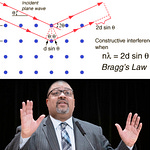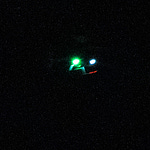In the pre-dawn hours of December 4th, as UnitedHealthcare CEO Brian Thompson fatefully walked toward Manhattan’s Hilton Hotel, the most expensive surveillance apparatus ever assembled hummed ineffectually overhead. A sprawling network of eighteen thousand cameras, radiation sensors, chemical detectors, gunshot locators, and cell tower simulators—a system costing taxpayers nearly $3 billion—promised to identify suspects within 1.2 seconds. It would prove about as useful as a wet cardboard CCTV camera.
The nine-day manhunt for Thompson’s killer would expose not just technological impotence but a masterclass in institutional Kabuki theatre, as New York’s highest-ranking officials performed an increasingly desperate pantomime of competence that collapsed under the slightest scrutiny.
The Art of Fictional Narratives
“Pieces to the puzzle are coming together,” Mayor McCheese—cough—Mayor Eric Adams assured reporters on December 5th, though investigators had yet to identify a single substantive lead. In what would become a pattern of increasingly baroque fiction, Adams escalated his performance two days later at a Police Athletic League event, delivering what could charitably be called unintentional improv comedy: “We don’t want to release that now… Let him continue to believe he can hide behind the mask.”
The mayor’s statement implied authorities had identified their suspect—a claim that would spectacularly explode like Prince Rupert's drop on December 9th when Chief of Detectives Joseph Kenny admitted, with refreshing if embarrassing candor: “No, we did not have his name prior to today.” Adams, it seemed, had been writing checks his surveillance system couldn’t cash—yet not a single media outlet has reported this. Adams, in the court of public opinion, committed perjury. For his part, Kenny really earned his Junior G-Man badge by keeping it just the facts.
$3 Billion-Dollar Hide and Seek
The NYPD’s Domain Awareness System (DAS), developed with Microsoft at an initial buy-in of $600 million in 2012 and now contributing to New York City’s over $3 billion in expenditures in citizen surveillance, markets itself as the ne plus ultra in crime detection. The system has processed over 2 billion license plate readings, 100 million summonses, and 54 million 911 calls. Yet when faced with a half-masked suspect with a backpack, this high tech Argus Panoptes proved as effective as a leper colony with cataracts.
The arrangement is so lucrative that New York City receives 30% of Microsoft’s revenue from selling the system to other cities—a pyramid scheme of surveillance where everyone profits except the taxpayers, who never get reimbursed, only watched 24/7. Despite this windfall, the system couldn’t match clear footage of Luigi Mangione at his Upper West Side hostel to images of the shooter. The same network that supposedly maintains 92% coverage of Manhattan somehow lost track of a suspect wearing what Kenny described, with unintended irony, as a “very distinctive gray backpack.”
Most tellingly, the NYPD has never released what should be their smoking gun: footage of Mangione traveling from the Upper West Side to the crime scene. Despite their network of cameras stretching from his hostel past the Frederick Douglass Houses between 104th and 100th streets along Amsterdam Avenue, this crucial evidence—which would show their suspect wearing the same distinctive outfit and backpack as Thompson’s killer—remains mysteriously absent. Is it the case the NYPD simply cannot directly connect the hostel guest to the midtown shooter? Or does it even exist at all?
The technological collapse reached its third act anticlimax at Port Authority—one of New York’s most aggressively surveilled transportation hubs—where their non-deepfake human MacGuffin vanished like Pokémon. All those radiation sensors, chemical detectors, and cell tower simulators proved less useful than a Happy Meal, or a Hash Brown, reader’s choice.
Celebrating Gold When You Haven’t Even Bronzed
“We have the drones up, we have aviation out, we have K9 out,” Police Commissioner Jessica Tisch declared in Hunger Games fashion on December 6th, engaging in what would become a premature victory lap. “When an incident like this happens, we don’t spare any expense.” The commissioner by and for McCheese neglected to mention the $3 billion already spent and that this impressive array of resources would prove less effective than a customer’s askance view at ye olde MickeyD’s.
The investigation’s sole pivotal tip—a missing persons report from San Francisco possibly suggesting Mangione’s identity—gathered dust for 45 hours with the FBI before reaching relevant investigators. When they finally contacted Mangione’s mother “very late on the 7th,” the information wasn’t processed in time to matter. Officer Big Mac would single-handedly accomplish what billions in surveillance technology and 5,400 senior officers could not.
The Metamorphosis of Motive Escalation
The case’s narrative underwent a transformation that would impress Kafka. What began on December 4th with Kenny stating “the motive for this murder currently is unknown” evolved into an elaborate theory of anti-corporate terrorism. Manhattan District Attorney Alvin Bragg’s office, perhaps compensating for the investigation’s earlier fumbles, indicted Mangione on December 17th for murder “as an act of terrorism”—a charge that appeared to materialize from the same ether that had swallowed their suspect at Port Authority.
The Fourth Estate’s Slumber
Throughout this theatrical production, mainstream media outlets performed their own role: that of the conveniently unconscious watchdog—the dog that never barked, à la Sir Arthur Conan Doyle’s “The Adventure of Silver Blaze.” The plot thickens as we discover the criminal is amongst us. Mayor McCheese? Press conferences devolved into exercises in digital stenography, with reporters dutifully recording official finger-wavings while failing to probe glaring contradictions or technological failures.
The somnambulant coverage reached its apex when Tisch praised “the greatest detectives in the world” for their role in capturing Thompson’s killer—neglecting to mention that a McDonald’s employee had accomplished what their multi-billion dollar system, countless drones, and the “greatest detectives in the world” could not.
While media outlets fastidiously recreated the NYPD’s narratives, mockingbird like—plotting Manhattan charted maps with the killer’s timestamped locations for public spectacle—they never questioned the timeline’s accuracy or challenged the scant evidence presented.
The Emperor’s New Surveillance System
Public skepticism persists about whether Mangione is indeed Thompson’s killer, with apparent discrepancies in facial features, height, build, hand size and structure, and gait between surveillance images and the arrested suspect. The NYPD maintains a telling silence about whether their supposedly infallible facial recognition system—capable of processing billions of data points and identifying suspects in 1.2 seconds—ever positively matched hostel footage to the shooter.
The nine-day manhunt revealed not just a gap but a chasm between surveillance capabilities and their mythos. Each official statement seemed to emerge from an alternate reality where their technology functioned as advertised, where their “greatest detectives” didn’t require assistance from the quick-service restaurant sector.
When Tisch praised their “phenomenal public servants” on December 17th, she inadvertently highlighted the system’s fundamental absurdity—all the artificial intelligence in Manhattan, backed by billions in taxpayer dollars, that she is afraid to even recognize, because she hasn’t—proved less effective than human intelligence behind a McDonald’s counter. It might do her good to be reminded, she is a servant too, in a situational awareness match out of her league.
New York’s multi-billion dollar and most sophisticated surveillance network, its “greatest detectives,” and its Domain Awareness System achieved what organizational theorists call peak inefficiency—a perfect inverse correlation between resources deployed and results achieved. Future law enforcement analysts will likely study this case, though perhaps not for the reasons Commissioner Tisch intended.
Conclusions as Curtains Fall
The Kabuki theatre of authority performed by New York’s officials during this investigation suggests a deeper institutional crisis: when technology and human resources fail, the response is not to acknowledge limitations but to construct elaborate and simple worded narratives of competence. The result is an reckless illusion of security, maintained at enormous public expense—a digital Eye of Sauron that is blind, but projects terror and influence nonetheless, overseen by officials who refuse to level with the public, enabled by a lapdog media industry that can’t be bothered to ask obvious questions.
On December 9th, Commissioner Tisch boasted that her investigators had "combed through thousands of hours of video" - a curious claim of righteous industriousness, given that their $3 billion SkyNet beta was specifically designed to eliminate such manual labor. Commissioner Tisch, Mayor Adams, and DA Alvin Bragg deserve zero to negative credit in this case. They were mere functionaries in what ended up being a crowdsourced manhunt for someone presumed guilty before being proven innocent. (Bragg's preemptive walkthrough of every step, including sentencing, in his pre-victory lap appears to warrant a mandatory visit to the New York Bar Association's Board of Overseers.)
The greatest trick the Devil ever pulled was convincing the world he didn’t exist. The greatest trick New York’s surveillance apparatus and apparatchiks ever pulled was convincing the public it did.








Share this post